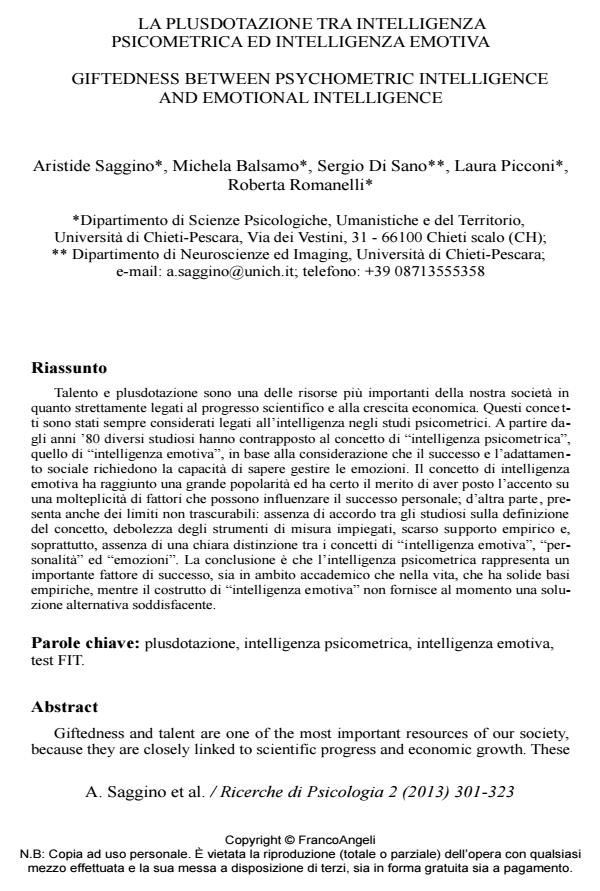Giftedness between psychometric intelligence and emotional intelligence
Journal title RICERCHE DI PSICOLOGIA
Author/s Aristide Saggino, Michela Balsamo, Sergio Di Sano, Laura Picconi, Roberta Romanelli
Publishing Year 2013 Issue 2013/2
Language Italian Pages 23 P. 301-323 File size 240 KB
DOI 10.3280/RIP2013-002005
DOI is like a bar code for intellectual property: to have more infomation
click here
Below, you can see the article first page
If you want to buy this article in PDF format, you can do it, following the instructions to buy download credits

FrancoAngeli is member of Publishers International Linking Association, Inc (PILA), a not-for-profit association which run the CrossRef service enabling links to and from online scholarly content.
Giftedness and talent are one of the most important resources of our society, because they are closely linked to scientific progress and economic growth. These concepts have always been considered to be related to intelligence in psychometric studies. Since the 80s a number of scholars have opposed the concept of "psychometric intelligence" to that of "emotional intelligence", on the grounds that both success and social adaptation require the ability to know how to manage emotions. The concept of emotional intelligence achieved great popularity and has some credit for having placed emphasis on a variety of factors that can influence personal success; on the other hand, it has non-negligible limitations: lack of agreement between scholars on the definition of the concept, weakness of the measuring instruments, little empirical support and, above all, the absence of a clear distinction between the concepts of "emotional intelligence", "personality" and "emotions". The conclusion is that psychometric intelligence is an important factor in academic and life success and has a solid empirical foundation, whereas the construct of "emotional intelligence" does not currently provide a satisfactory alternative solution.
Keywords: Giftedness, psychometric intelligence, emotional intelligence, test FIT.
- The Role of Gender in the Association Among the Emotional Intelligence, Anxiety and Depression Maria Rita Sergi, Laura Picconi, Marco Tommasi, Aristide Saggino, Sjoerd J. H. Ebisch, Andrea Spoto, in Frontiers in Psychology 747702/2021
DOI: 10.3389/fpsyg.2021.747702
Aristide Saggino, Michela Balsamo, Sergio Di Sano, Laura Picconi, Roberta Romanelli, La plusdotazione tra intelligenza psicometrica ed intelligenza emotiva in "RICERCHE DI PSICOLOGIA " 2/2013, pp 301-323, DOI: 10.3280/RIP2013-002005